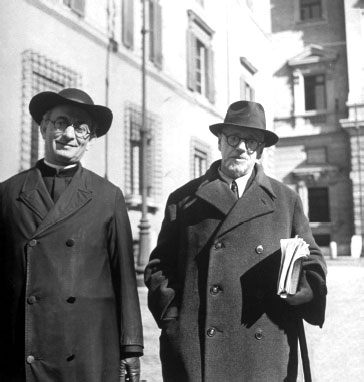Question:
Hello, Rabbi.
I hope Hashem has been blessing your work and family. As you may recall, I am a former Christian who is now living as a Noahide and considering conversion to Judaism. I am confronted again with the Christian holiday season and am starting to encounter some uncomfortable situations at home since my extended family still celebrates Xmas. Their love and happiness are important to me, and I would appreciate any suggestions you may have for negotiating these difficulties.
Answer:
The month of December often ushers in a season of strained family relations when its members are made up of both Christians and Jews. Of all Christian holidays, one would least expect Christmas to generate family tumult, considering that Christian teachers have long abandoned the claim that Jesus was actually born on December 25th.
No date or year for Jesus’ birth is suggested in the New Testament. The Book of Mark – the earliest Gospel, written about 65 CE – contains no infancy story, and begins with the baptism of an adult Jesus. Paul, whose letters are the oldest epistles in the Christian canon, also made no comment about the date of Jesus’ birth. Clearly, the earliest Christians lacked interest in or knowledge of Jesus’ birthdate.
Moreover, it is universally accepted that popular pagan festivals enticed Christendom to commemorate Jesus’ birthday on December 25th. Widespread Roman holidays were celebrated on this date, which marked the winter solstice on the imperial calendar. For it was on this day that the sun reversed its southward retreat and proved itself to be “unconquered.”
The virulently anti-Semitic church father, John Chrysostom, boasted of the connection of the rebirth of the sun to the birth of Jesus, declaring:
“They call it the ‘Birthday of the Unconquered.’ Who indeed is so unconquered as Our Lord . . . ?” ((In the fourth century, John Chrysostom (del Solst. Et Æquin. II, p. 118, ed. 1588), says:
“Sed et dominus noster nascitur mense decembris . . . VIII Kal. Ian… Sed et Invicti Natalem appelant. Quis utique tam invictus nisi dominus noster? . . . Vel quod dicant Solis esse natalem, ipse est Sol iustitiæ.” — “But Our Lord, too, is born in the month of December . . . the eight before the calends of January [25 December]…, But they call it the ‘Birthday of the Unconquered.’ Who indeed is so unconquered as our Lord…? Or, if they say that it is the birthday of the Sun, He is the Sun of Justice.”))
The pagan tradition and ritual surrounding the winter solstice, which included the use of evergreen boughs, is an adaptation of pagan tree worship. This popular festival of the Sun god was therefore celebrated on December 25th.
The prophet Jeremiah condemned the pagan ritual of bringing adorned trees into the home, and denounced their use 500 years before the advent of Christianity!
Thus saith the Lord: “Learn not the way of the nations, and be not dismayed at the signs of heaven; for the nations are dismayed at them. 3For the customs of the peoples are vanity; for it is but a tree which one cutteth out of the forest, the work of the hands of the workman with the axe. 4 They deck it with silver and with gold, they fasten it with nails and with hammers, that it move not.” (Jeremiah 10:2-4)
The Reverend Increase Mather of Boston conceded in 1687 that,
“The early Christians who first observed the Nativity on December 25 did not do so thinking that Jesus was born in that month, but because the heathens’ Saturnalia – a week long period of lawlessness celebrated December 17-25 – was at that time kept in Rome, and they were willing to have those Pagan Holidays metamorphosed into Christian ones.” ((Increase Mather, A Testimony against Several Profane and Superstitious Customs, Now Practiced by Some in New England (London, 1687), p. 35. See also Stephen Nissenbaum, The Battle for Christmas: A Cultural History of America’s Most Cherished Holiday, New York: Vintage Books, 1997, p. 4.))
Because of its known pagan origin, Christmas was banned by the Puritans and its observance was illegal in Massachusetts between 1659 and 1681. ((Nissenbaum, p. 3.))
In the 4th century CE, Christianity imported the Saturnalia festival, hoping to absorb great masses of pagan adherents in with it. Christian leaders succeeded in converting to Christianity large numbers of pagans by promising them that they could continue to celebrate the Saturnalia as Christians. This is the oldest literary reference to the pagan feast of Sol Invictus, “The Unconquered Sun.” Also “VIII kal. ian. natus Christus in Betleem Iudeæ,” meaning, “Birth of Christ in Bethlehem, Judea” is the oldest reference to Jesus birth as being on the December 25 feast day. ((The first mention of a Nativity feast appears in the Philocalian calendar, a Roman document from 354 CE, which lists December 25th as the day of Jesus’ birth.))
It is therefore no coincidence that the Church selected the date of Jesus’ birthday to coincide with so many other notable pagan deities of the mystery religions which celebrated December 25th with wild festivities, which include:
- Saturnalia was a Roman festival of general merrymaking and debauchery held around the time of the winter solstice. This week-long party was held in honor of the god Saturn, and involved sacrifices, gift-giving, special privileges for slaves, and a lot of feasting. They would exchange good-luck gifts called Stenae (lucky fruits). Although this holiday was partly about giving presents, more importantly, it was to honor an agricultural god. Seneca the Younger ((Lucius Annaeus Seneca (often known simply as Seneca, or Seneca the Younger) (ca. 4 – 65 CE) was a Roman Stoic philosopher, statesman, dramatist of the Silver Age of Latin literature.)) described Rome during Saturnalia around AD 50:
It is now the month of December, when the greatest part of the city is in a bustle. Loose reins are given to public dissipation; everywhere you may hear the sound of great preparations, as if there were some real difference between the days devoted to Saturn and those for transacting business… Were you here, I would willingly confer with you as to the plan of our conduct; whether we should eve in our usual way, or, to avoid singularity, both take a better supper and throw off the toga. ((Sen. epist. 18,1-2))
Scholars view this festival as the origin of later Christmas celebrations, or at least as contributing to them. Christian apologists strain a bit when they suggest that the Christian feast of Christmas on December 25 does not necessarily coincide with the date range of the Saturnalia, and that Christmas in any regard has not always been celebrated on December 25.
In fact, the Catholic Encyclopedia concedes that while midwinter pagan feasts such as Saturnalia may have helped influence the eventual choice to fix the date of Christmas, this does not mean that Christian Christmas traditions find their origin or inspiration there:
“Though the abundance of analogous midwinter festivals may indefinitely have helped the choice of the December date, the same instinct which set Natalis Invicti (Unconquered Sun) at the winter solstice will have sufficed, apart from deliberate adaptation or curious calculation, to set the Christian feast there too.” ((Martindale, Cyril, “Christmas: History and Celebration, The Catholic Encyclopedia, 1912))
- The Roman religion venerated Attis, who was said to have been born on December 25th to the virgin Nana, sacrificed as an adult in order to bring salvation to mankind, died about March 25th after being crucified on a tree, and descended for three days into the underworld. His followers proclaimed that he arose on Sunday as the solar deity for the new season. They tied an image of Attis to a tree on “Black Friday,” and carried him in a procession to the temple. His body was symbolically eaten by his followers in the form of bread. Worship of Attis began in Rome circa 200 BCE.
- Greece’s Dionysus is savior-god whose birth was observed on December 25th. He was widely worshiped throughout much of the Middle East as well. He had a center of worship in Jerusalem in the 1st century BCE. In later years, his flesh and blood were symbolically eaten in the form of bread and wine. His followers believed that he was the son of Zeus, the father god.
- Four thousand years ago, the people of ancient Egyptian celebrated the daily rebirth of Horus – the god of the Sun. Each year, this cycle of birth, death and rebirth took place, and people accordingly believed that there is new life after death, like the sun returned after a period of cold and darkness. Winter festivals were also common in Greece and Rome, as well as in the rest of Europe. When a new religion called Christianity invaded Europe, the new hierarchy had trouble converting the Pagans, because the people did not want to give up their old holidays and ancient beliefs. So Christian churches were built on ancient places sacred to Pagans, and Pagan symbols were incorporated into the symbolism of Christianity. Within a few centuries, Christians successfully had the masses worshiping a new holiday celebrated on December 25th.
- The famed Egyptian god Osiris, venerated as a savior-god, may have been worshiped as far back as Neolithic times. He was called “Lord of lords, King of kings, God of gods . . . the resurrection and the life, the Good shepherd… the god who ‘made men and women be born again.’” Three wise men announced his birth. His followers ate cakes of wheat which symbolized his body. Worship of Osiris, and celebration of his December 25th birth, were established throughout the Roman Empire by the end of the 1st century BCE.
- Mithra was a Persian savior. Worship of Mithra became common throughout the Roman Empire, particularly among the Roman civil service and military. Mithraism was a competitor of Christianity until the 4th century. Their god was said to have been born on December 25th, circa 500 BCE. ((Ulansey, David (1991). Origins of the Mithraic Mysteries. New York: Oxford UP. pp. 3 to 4.Meyer, Marvin (2006). The Mithras Liturgy. In A.J. Levine, Dale C. Allison, Jr., and John Dominic Crossan. The historical Jesus in context. New Jersey. pp. 179. Princeton University Press. 4.)) His birth was witnessed by shepherds and by gift-carrying Magi. This was celebrated as the “Dies Natalis Solic Invite,” The “Birthday of the Unconquered Sun.” Many followers believed that he was born of a virgin. During his life he was said to have performed many miracles, cured many illnesses, and cast out devils. He celebrated a Last Supper with his 12 disciples, and ascended to heaven at the time of the spring equinox, about March 21st.
- According to ancient Babylonian tradition, Semiramis (who eventually became known as the goddess Astarte/Asherah/Ashtoreth/Isis/Ishtar/Easter in other pagan religions) claimed that after the untimely death of her son/husband Nimrod, a full grown evergreen tree sprang up overnight from a dead tree stump. Semiramis claimed that Nimrod would visit that evergreen tree and leave gifts each year on the anniversary of his birth, which just happened to be on December 25th. ((Hislop, Alexander. The Two Babylons (1858) ))
Ironically, while no reference to Christmas appears in the New Testament, the celebration of Chanukah is explicitly mentioned in John 10:22.
In order for me to render some more concrete advice on how to diplomatically avoid setting off family fireworks this holiday season, I encourage you to write back with some more details about your family’s dynamics and volatility. Happy Chanukah and welcome home!
Sincerely yours,
Rabbi Tovia Singer


